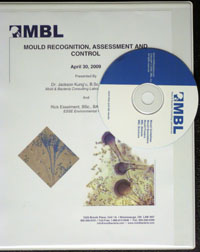Dr. Jackson Kung’u (PhD) provided a professional development course (PDC) at the AIHce 2010, in Denver, Colorado. Details of that course are below.
PDC 418: Denver, Colorado, May 23, 2010
Mold Recognition, Effective Sampling Strategies and Results Interpretation
Description: The PDC will enable participants to recognize indoor mold, develop effective sampling strategies and interpret laboratory results, all in the context of current mold-control and remediation principles. Participants will acquire a detailed understanding of the methods used to investigate mold growth in buildings and types of samples to collect. Discussions will explore the biology of molds, the causes of mold growth, as well as mold control and common indoor molds.
Check for our current mold courses at https://moldbacteria.com/training.html

